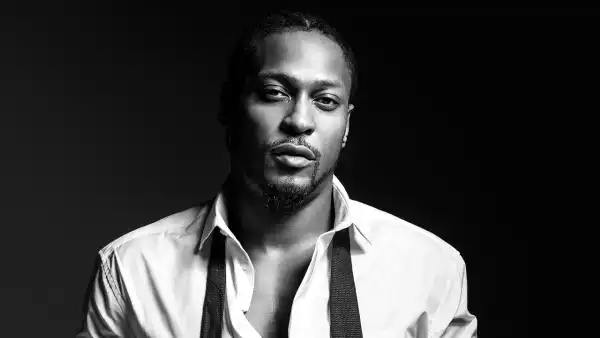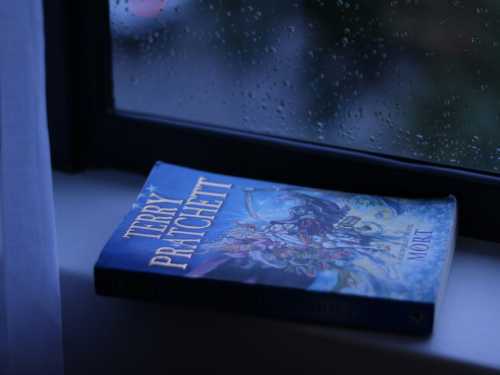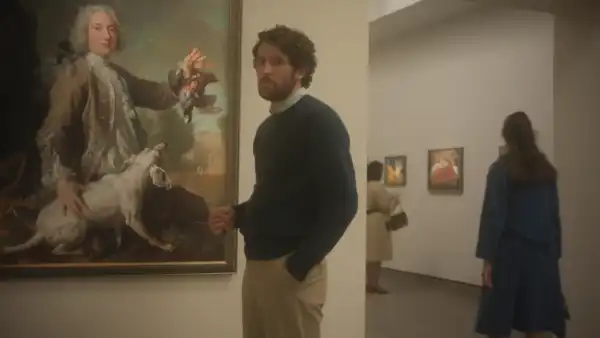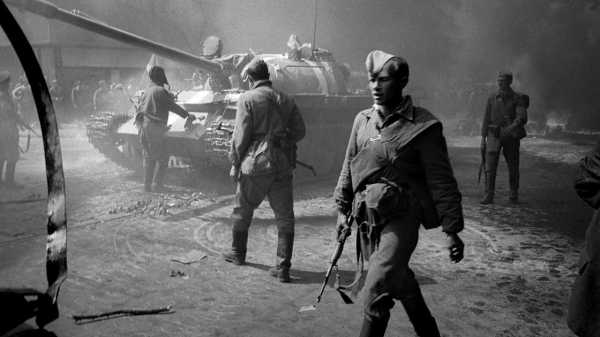
On August 20th and 21st, 1968, fifty years ago this week, hundreds of thousands of Soviet and allied Warsaw Pact troops poured over the Czechoslovak border from surrounding countries in a massive show of force that quickly deposed the government of Alexander Dubček. As the first secretary of the Central Committee of the Czech Communist Party, Dubček had presided over a short-lived experiment in Communist liberalization known as the Prague Spring. Dubček had rehabilitated political opponents, abolished restrictions on travel, erased press censorship, and encouraged freedom of expression; he later remembered being inspired by the French Revolution’s calls for “Liberté, Égalité, and Fraternité.” But the artistic and political ferment that resulted—Dubček referred to his program as “socialism with a human face”—proved too much for the doughty post-Stalinist Russian premier, Leonid Brezhnev. In the face of the Soviet invasion, the Prague Spring partisans adopted a policy of nonviolent resistance, which allowed them to hold out for another eight months, but the movement was ultimately crushed. The invasion evolved into an occupation that continued for twenty years, leading to a mass emigration from the country and breaking the spirit of many of those who stayed behind.
Nowhere in New York do the wounds of 1968 feel more fresh than at the hundred-and-twenty year-old cultural center on East Seventy-third Street known as Bohemian National Hall. There, the Czech Center, part of the Ministry of Foreign Affairs, has put up—“August 21, 1968”—an exhibit which painstakingly documents the first twenty-four hours of the invasion. The exhibit, conceived of and mounted by the Czech Center’s programming director, Marie Dvorakova, is focussed on twenty photographs of the invasion that have never previously travelled to the United States. At the opening, on the night of the 21st, the director, Barbara Karpetová, observed with deliberate understatement that her compatriots viewed the Soviet invasion as “one of the most significant moments of our history,” and made it clear that the pain of that period’s failed struggle against authoritarianism is still “topical” for most Czechs.
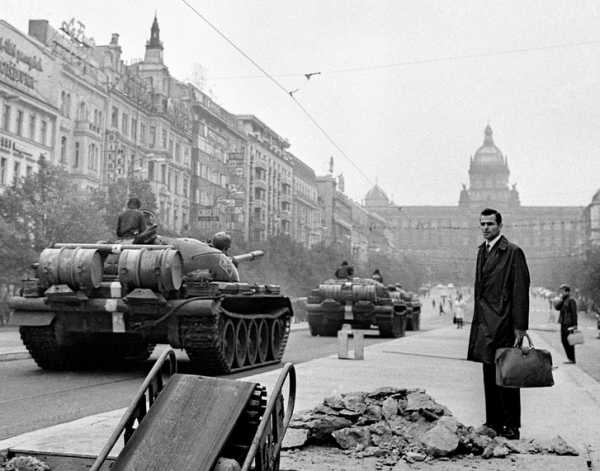
Wenceslas Square, Prague, August 21, 1968.
Photograph by Vladimír Lammer / Courtesy Czech Center New York
Dvorakova had originally planned a commemorative exhibit featuring the work of Josef Koudelka, who took many of the iconic photographs of the Soviet invasion. (His images were initially published by the Sunday Times Magazine in London at the time of invasion itself, under the initials “P.P.,” for “Prague Photographer,” in order to protect Koudelka from retaliation.) But Koudelka’s photographs were already well known and a friend suggested that Dvorakova instead speak with Dana Kyndrová, another Czech photographer, who was working inside the Czech Republic to collect photographs of major events in Czech history, including the invasion of ’68. Many of the photographs Kyndrova gathered had never previously been seen; some had to be printed directly from negatives. An exhibit of some of the of the images was staged in Prague in 2008, but they subsequently had little circulation outside of the Czech Republic. So, in July, Dvorakova met with Kyndrová in Prague, and they chose twenty photos taken during the initial twenty-four hours of the 1968 invasion. Dvorakova had prints made and brought them back in her suitcase. The photographs show the shock and grief of ordinary Prague citizens, as well as residents’ efforts to impede and obstruct the plans of occupying troops. Dvorakova’s goal in the new exhibit, she said, is “to illustrate events that happened, hour by hour, on that one day.”
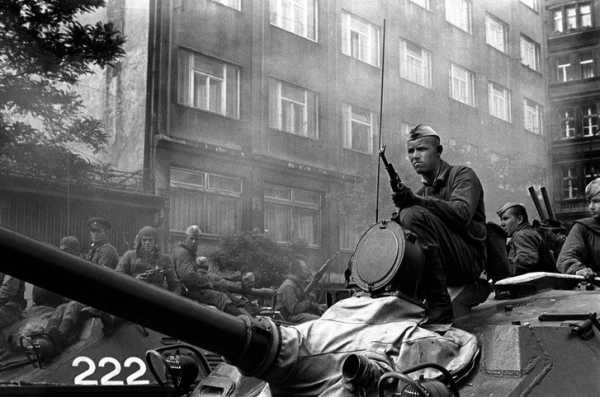
Prague, August 21, 1968.
Photograph by Josef Hník / Courtesy Czech Center New York
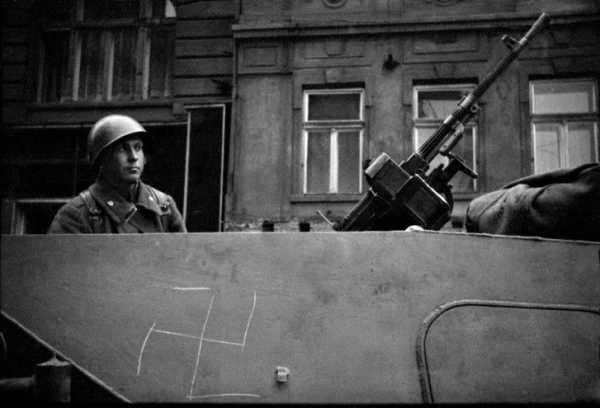
Prague, August 21, 1968.
Photograph by Jaromír Čejka / Courtesy Czech Center New York
The Czechoslovakia invaded by the Russians in 1968 has since been split into the Czech and Slovak Republics, and on the night of the Czech Center opening, Bohemian National Hall was offering something of a double bill. Upstairs, the Slovak consulate was presenting a onetime screening of a documentary about Alexander Dubček, produced by TV Bratislava in 1991, a month before he was fatally wounded, at age seventy, in a car accident. Dubček’s own history deepens the understanding of the 1968 events. In the six hours between the Warsaw Pact troops crossing the border and their arrival in Prague, Dubček ordered the Czechs not to resist. “I would have had the blood of thousands on my hands without any hope of victory,” he told the TV Bratislava interviewer. The Russian invaders arrested him and hauled him off to Moscow anyway, only to allow him to return to Prague six days later, where he was forced to preside over the dismantling of his own liberalization. Within two years, however, Dubček was expelled from the Communist Party and became a much beloved, if constantly surveilled, Slovak Forest Service employee. In the documentary he recalls, during winter months, forcing his driver to pull over so that he could skate whenever they passed a frozen pond.
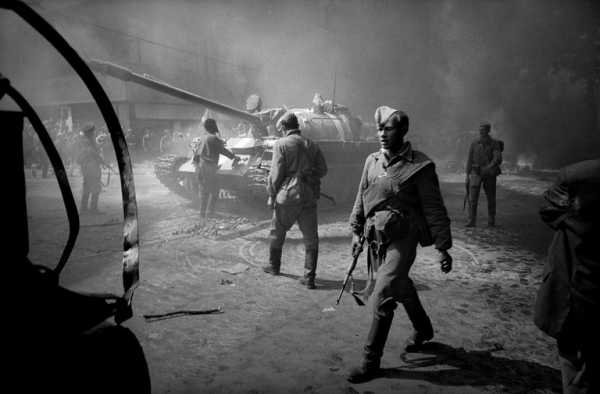
Prague, August 21, 1968.
Photograph by Libuše Kyndrová / Courtesy Czech Center New York
The Czechoslovakia invaded by the Russians in 1968 has since been split into the Czech and Slovak Republics, and on the night of the Czech Center opening, Bohemian National Hall was offering something of a double bill. Upstairs, the Slovak consulate was presenting a onetime screening of a documentary about Alexander Dubček, produced by TV Bratislava in 1991, a month before he was fatally wounded, at age seventy, in a car accident. Dubček’s own history deepens the understanding of the 1968 events. In the six hours between the Warsaw Pact troops crossing the border and their arrival in Prague, Dubček ordered the Czechs not to resist. “I would have had the blood of thousands on my hands without any hope of victory,” he told the TV Bratislava interviewer. The Russian invaders arrested him and hauled him off to Moscow anyway, only to allow him to return to Prague six days later, where he was forced to preside over the dismantling of his own liberalization. Within two years, however, Dubček was expelled from the Communist Party and became a much beloved, if constantly surveilled, Slovak Forest Service employee. In the documentary he recalls, during winter months, forcing his driver to pull over so that he could skate whenever they passed a frozen pond.
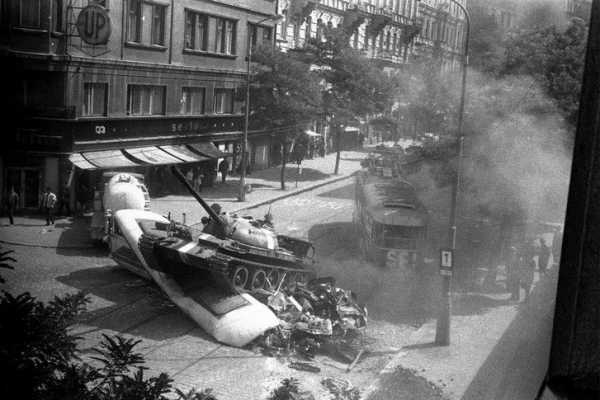
Prague, August 21, 1968.
Photograph by Jiří Stivín / Courtesy Czech Center New York
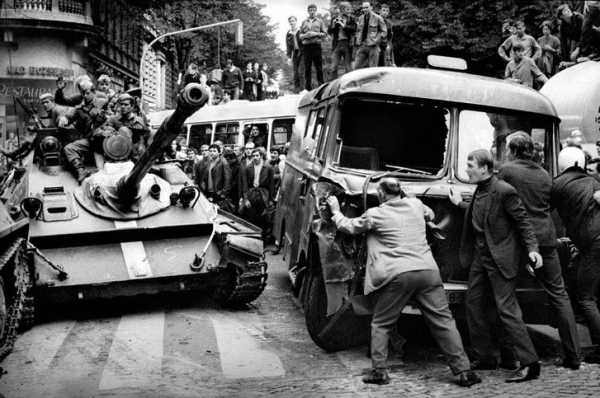
Prague, August 21, 1968.
Photograph by Bohumil Dobrovolský / Courtesy Czech Center New York
If nothing else, the events around Prague Spring serve as a reminder of the limitations of authoritarian solutions. When I asked Barbara Karpetová, of the Czech Center, about Dubček, she looked a little pained and said that she thought he was naïve to have imagined that he could accomplish what he wanted within the system he was working with. “It serves as a reminder,” she’d said earlier, “that freedom should never be taken for granted.”
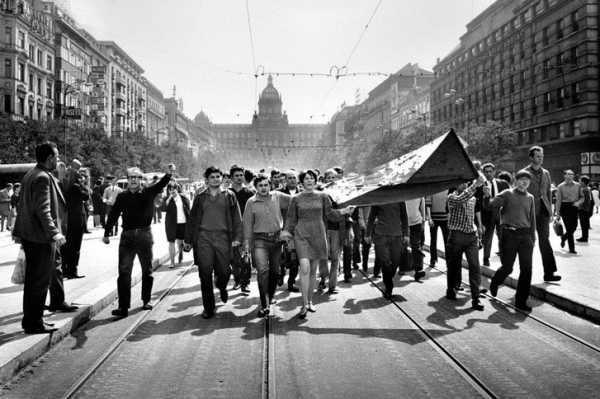
Prague, August 21, 1968.
Photograph by Libuše Kyndrová / Courtesy Czech Center New York
Sourse: newyorker.com
